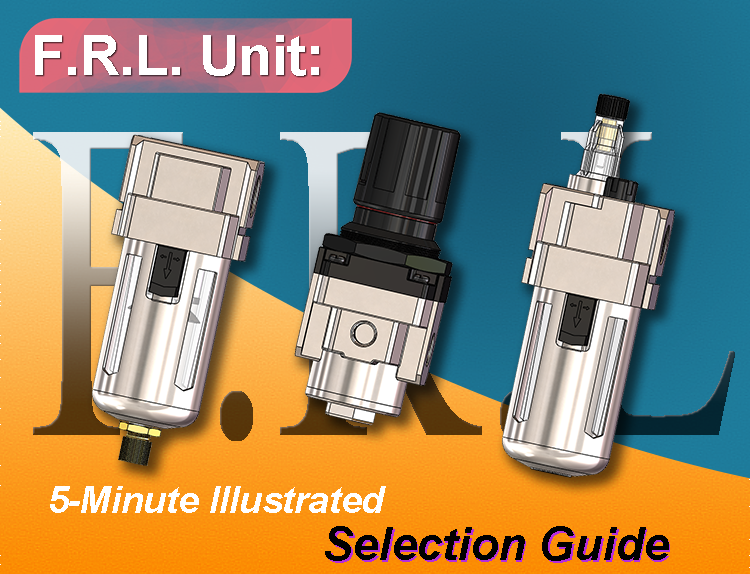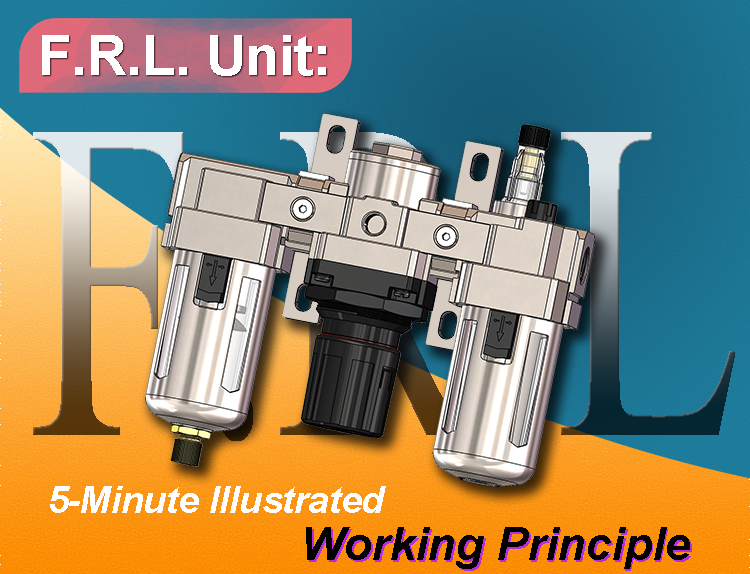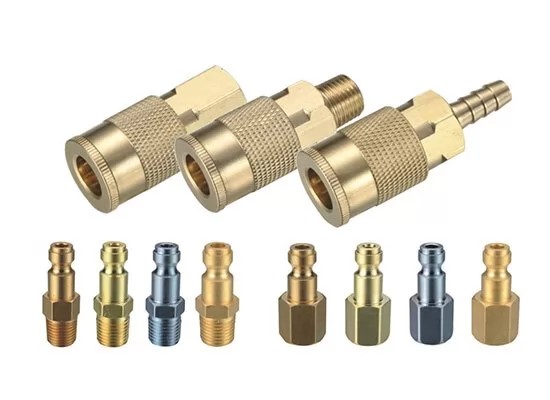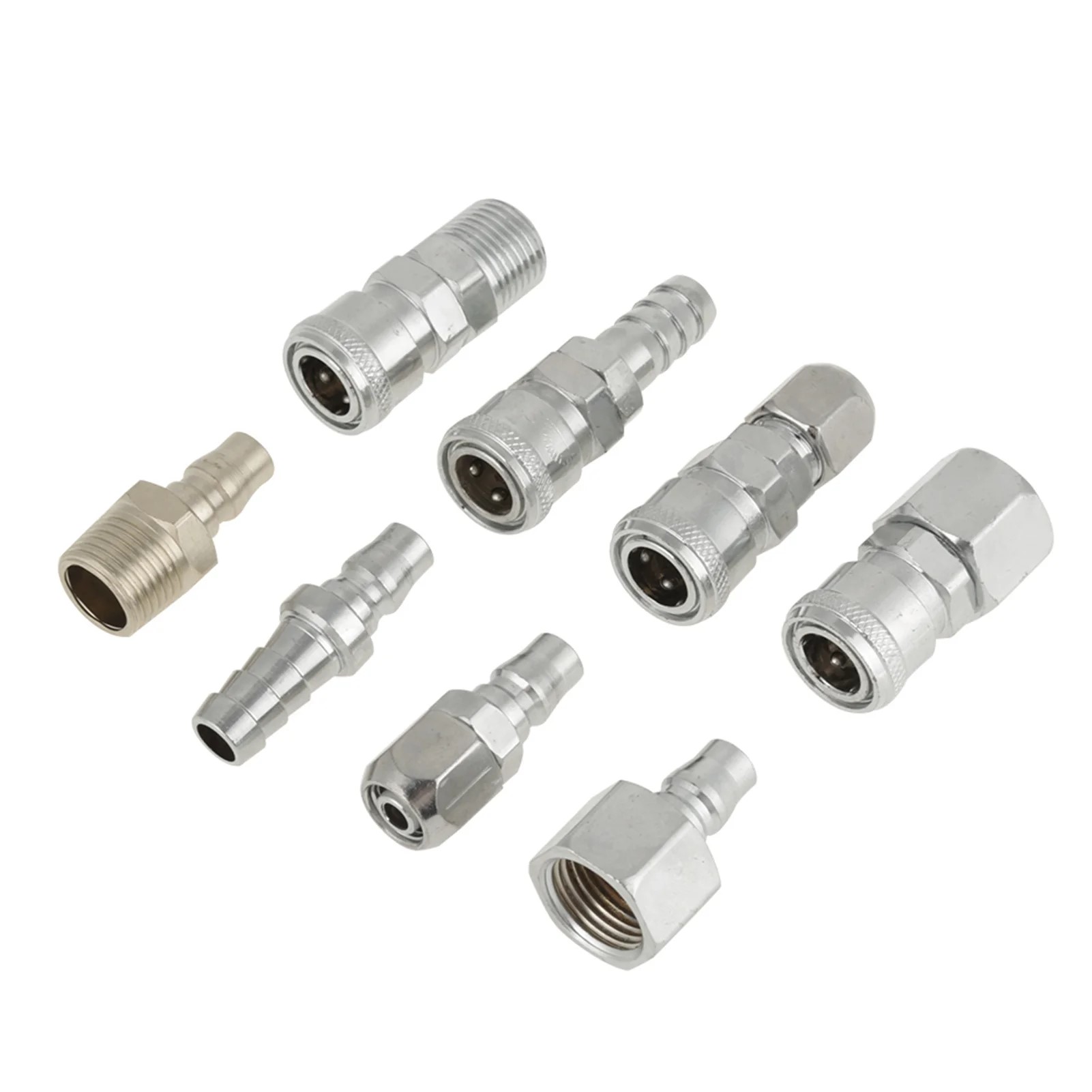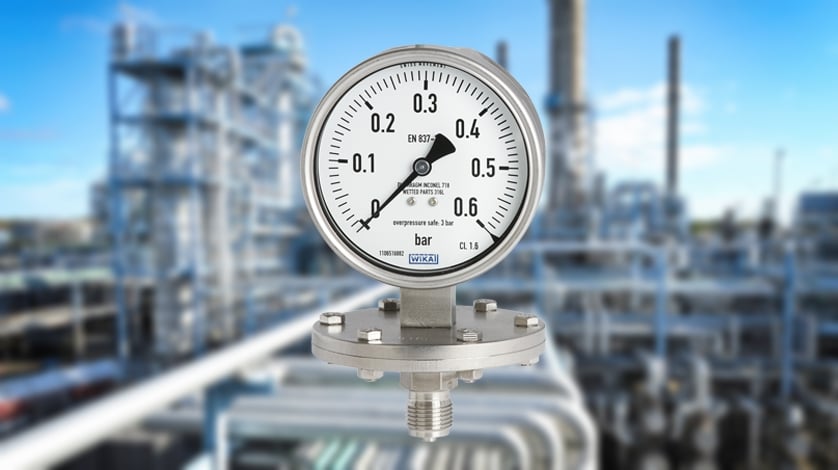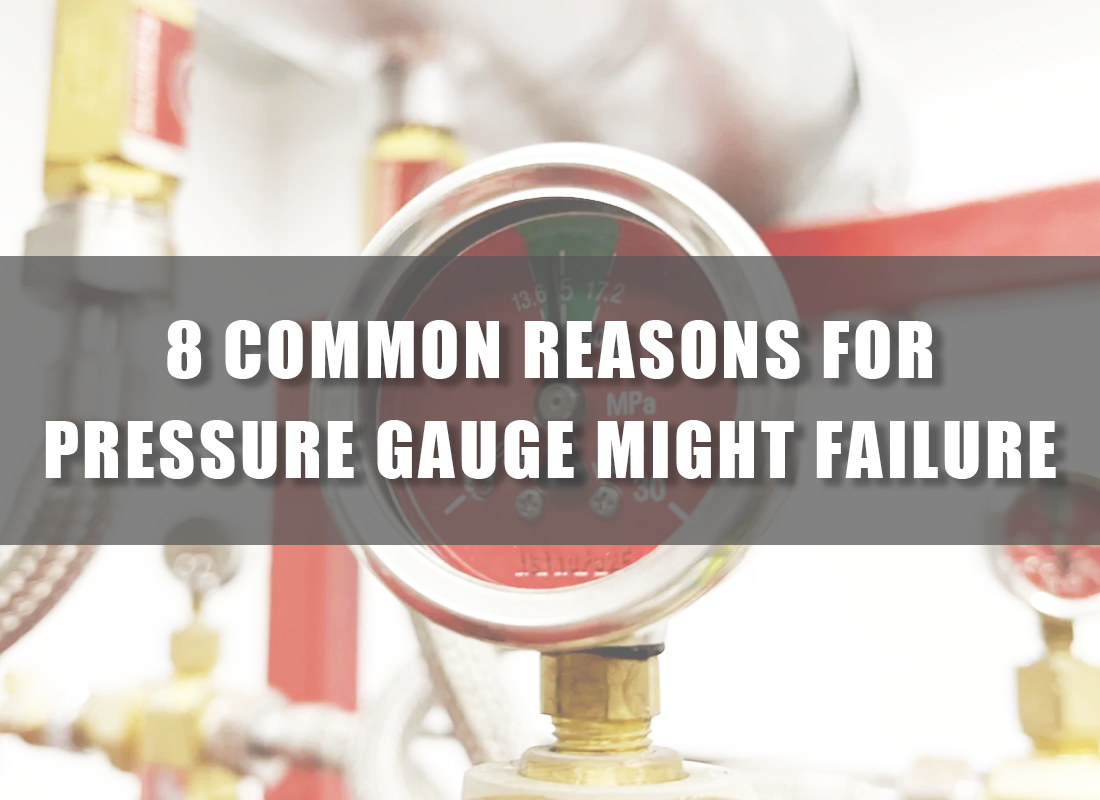A pressure gauge is used to measure the air pressure in a pneumatic system. Pressure measurement is essential for the proper operation of many systems and can be used to monitor and control the performance of compressors, pneumatic systems, and other air-operated equipment, helping operators make informed predictions. A power-free, robust, and shock-resistant type of pressure gauge is particularly important for various gas applications.
In a typical pneumatic system, the commonly measured pressures include Gauge pressure, Differential pressure, as well as Absolute pressure and Sealed pressure.
The mechanical Bourdon tube pressure gauge is mainly used for real-time monitoring of system air pressure in pneumatic systems. In the system, it is necessary to measure the compressed air pressure at locations such as the compressor outlet, air receiver tank, filter–regulator unit, actuator inlet, and pipeline test points, allowing operators or maintenance personnel to easily observe the system pressure status.
What is the difference between gauge pressure and pressure gauge?
Gauge Pressure is the most commonly used pressure concept in industrial and pneumatic systems. It represents the pressure relative to Atmospheric Pressure. When the pressure gauge shows a positive value, it means the pressure is higher than atmospheric pressure; when it shows a negative value (vacuum gauge), it means the pressure is lower than atmospheric pressure. For example, if the downstream pressure of a pressure regulator reads 6 bar, it indicates a gauge pressure of 6 bar, which is 6 bar above atmospheric pressure, and the actual absolute pressure is 7 bar.
Pressure Gauge is a device used to measure and display the air pressure in a pneumatic system. It converts the gas pressure into an intuitive pointer reading or an electronic signal.
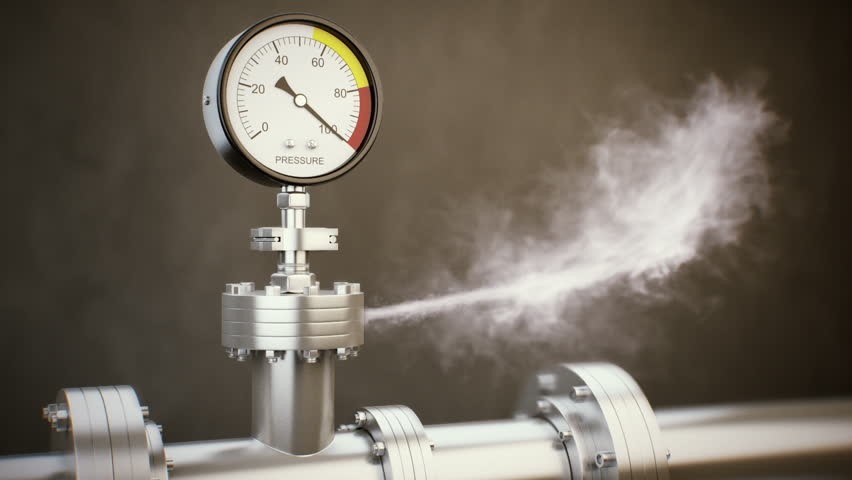
The working principle of bourdon pneumatic pressure gauge
The working principle of a Pneumatic Pressure Gauge is mainly to convert gas pressure into mechanical displacement or pointer movement, which is displayed on the dial.
There are many installation positions for a pressure gauge. It can be installed at the inlet and outlet of a regulator. The SAG 40/50 series Bourdon pressure gauges produced by Fokca, with standard threaded connections, can be mounted on the regulator's gauge port. This allows the downstream pressure reading after the regulator adjustment to be displayed.
Components of a Bourdon Pneumatic Pressure Gauge
The bourdon pressure gauge has vibration resistance and the construction of Bourdon tube pressure gauge is well-established and reliable with a mature type of mechanical transmission mechanism.The following are its components:
Bourdon Tube:A flexible, curved tube that serves as a pressure-sensing element.
Socket / Pressure Inlet:Connects to the gas or liquid being measured.
Link and Lever Mechanism:Amplifies small deformations of the Bourdon tube.
Sector Gear and Pinion:Converts linear displacement into pointer rotation.
Pointer:Indicates pressure.
Dial:Displays the pressure scale.
Case / Casing:Protects the internal mechanism, usually made of metal.
Window:Protects the dial and allows for easy viewing.
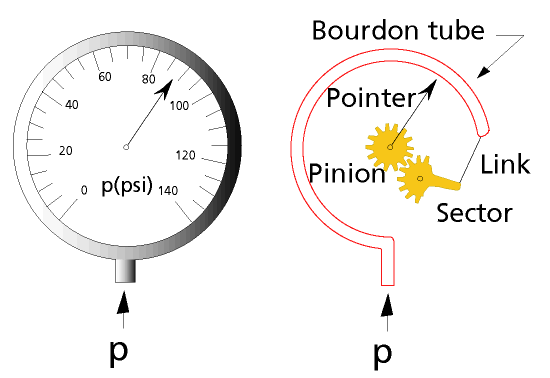
Internal working principle of the pointer-type Bourdon pressure gauge
Taking the most common Bourdon tube pressure gauge as an example, the inside of the gauge contains a C-shaped elastic Bourdon tube. When the medium enters the Bourdon tube, it begins to move—much like a balloon trying to balance the pressure. This movement is transmitted through a linkage (connected to the Bourdon tube via an end piece) and converted into a measurable pressure value, which is indicated by the pointer on the dial.
From the perspective of the flowing air:
The air source is connected to the pressure gauge inlet
The pressure acts on the measuring element — the Bourdon Tube
The measuring element produces mechanical displacement
The displacement is transmitted to the pointer through gears or a lever mechanism
The pointer indicates the pressure value on the dial
Different applications of bourdon tube pneumatic pressure gauge
Manufacturing Industry
For operations such as robotic arms that require stable air pressure, conveyors that need uniform speed, and material-feeding devices, pressure gauges are used to ensure the stability of the air pressure.
Automotive Industry
In applications such as pneumatic tools, pneumatic machinery on assembly lines, tire inflation, and brake system testing, precise pressure regulation is required.
Food and Beverage Industry
When pneumatic valves need to precisely control liquid flow, pressure gauges are used to monitor whether the compressed air is being supplied steadily. They help ensure that the piston rod of the cylinder extends with consistent length and speed.
Construction Industry
For pneumatic tools such as nail guns, and for equipment like sandblasting and spray painting systems, stable and appropriate air pressure is essential to avoid equipment damage. Pressure gauges are used to monitor air pressure levels suitable for the tools, ensuring efficiency and safety.
Energy / Petrochemical Industry
Whether controlling fluid flow through pneumatic valves or testing pipeline pressure, pressure gauges are used to monitor critical data and ensure the safety of pipelines and equipment.




